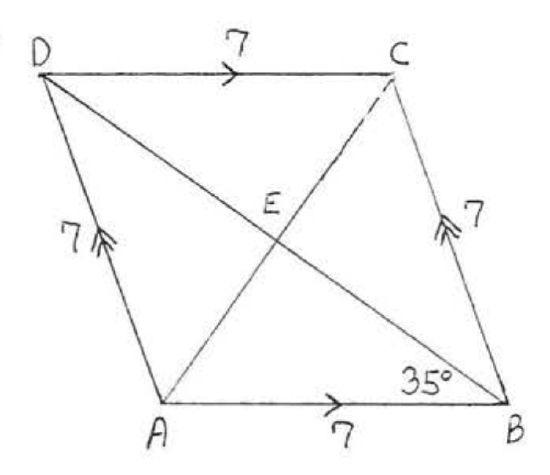6.4: The Area of a Rhombus
- Page ID
- 34149
The area of a rhombus can be found by using the formula for the area of a parallelogram, \(A=bh\), since a rhombus is a special kind of parallelogram (Figure \(\PageIndex{1}\)). However, if the diagonals are known the following formula can be used instead (Figure \(\PageIndex{2}\)):
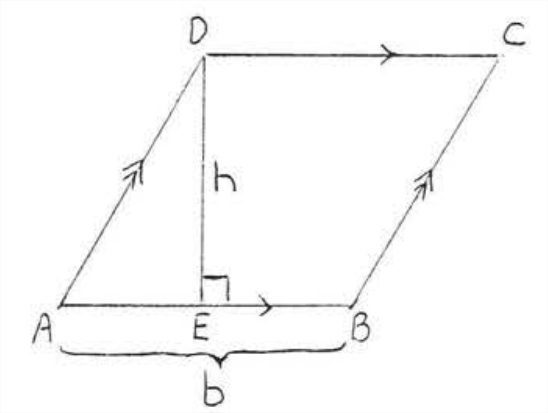
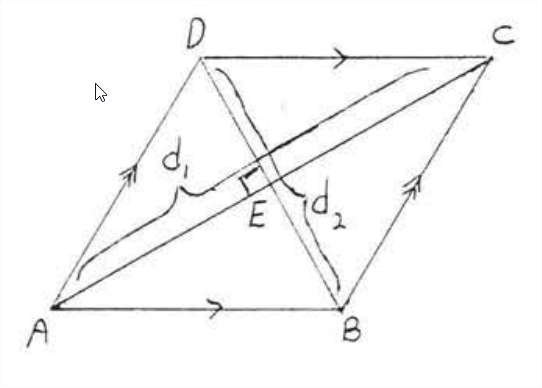
The area of a rhombus is one-half the product of the diagonals.
\[A=\dfrac{1}{2} a_{1} a_{2}\]
- Proof
-
Referring to Figure \(\PageIndex{2}\),
Area of \(\triangle ABC\) = \(\dfrac{1}{2} bh = \dfrac{1}{2} (AC)(BE) = \dfrac{1}{2} d_1 (\dfrac{1}{2} d_2) = \dfrac{1}{4} d_1d_2\).
Area of \(\triangle ADC\) = \(\dfrac{1}{2} bh = \dfrac{1}{2} (AC)(DE) = \dfrac{1}{2} d_1 (\dfrac{1}{2} d_2) = \dfrac{1}{4} d_1d_2\).
Area of rhombus \(ABCD\) = Area of \(\triangle ABC\) + Area of \(\triangle ADC\) = \dfrac{1}{4}d_1d_2 + \dfrac{1}{4} d_1d_2 = \dfrac{1}{2} d_1d_2\).
Find the area of the rhombus:
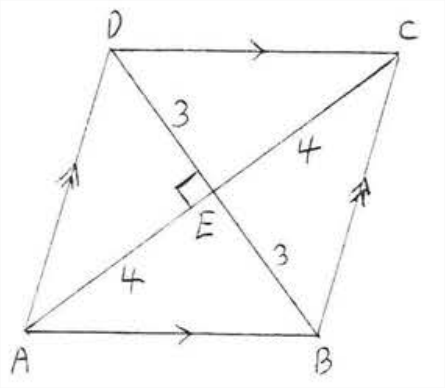
Solution
\(A=\dfrac{1}{2} a_{1} d_{2}=\dfrac{1}{2}(8)(6)=\dfrac{1}{2}(48)=24\)
Answer: 24.
Find the area and perimeter of the rhombus:
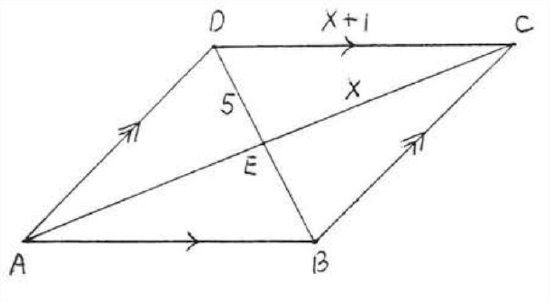
Solution
The diagonals of a rhombus are perpendicular so \(\triangle CDE\) is a right triangle. Therefore we can apply the Pythagorean theorem.
\[\begin{array} {rcl} {5^2 + x^2} & = & {(x+1)^2} \\ {25 + x^2} & = & {x^2 + 2x + 1} \\ {24} & = & {2x} \\ {12} & = & {x} \end{array}\]
\(d_1 = 12 + 12 = 24\). \(d_2 = 5 + 5 =10\). \(A = \dfrac{1}{2}d_1d_2 = \dfrac{1}{2} (24)(10) = 120\).
\(CD = x + 1 = 12 + 1= 13\).
Perimeter = 13 + 13 + 13 + 13 = 52.
Answer: \(A = 120\), \(P = 52\).
Find the area of the rhombus:
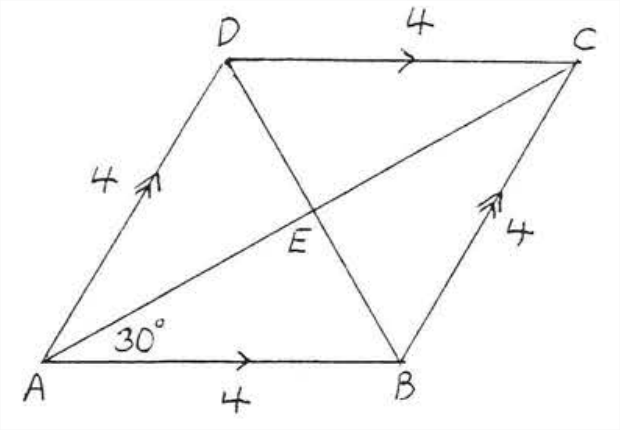
Solution
As in Example 4.5.6 of section 4.5, we obtain \(AC = 4\sqrt{3}\) and \(BD = 4\), Area = \(\dfrac{1}{2} d_1d_2 = \dfrac{1}{2} (AC)(BD) = \dfrac{1}{2}(4\sqrt{3})(4) = 8\sqrt{3}\).
Answer: \(A = 8\sqrt{3}\).
Problems
1 - 2. Find the area of the rhombus:
1.
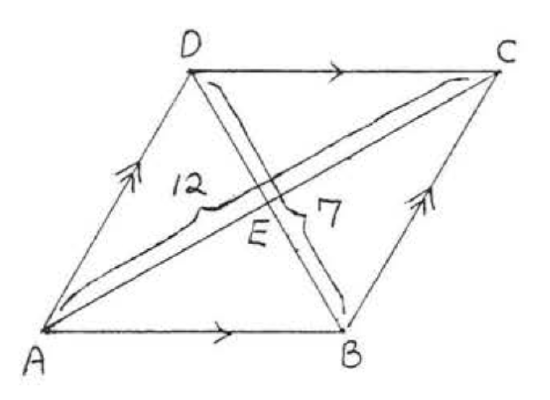
2.
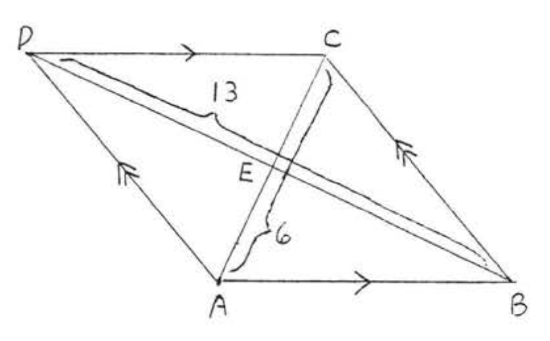
3 - 8. Find the area and perimeter of the rhombus:
3.
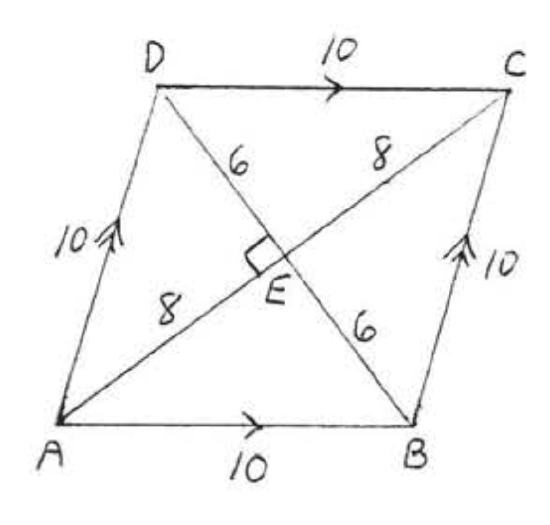
4.

5.
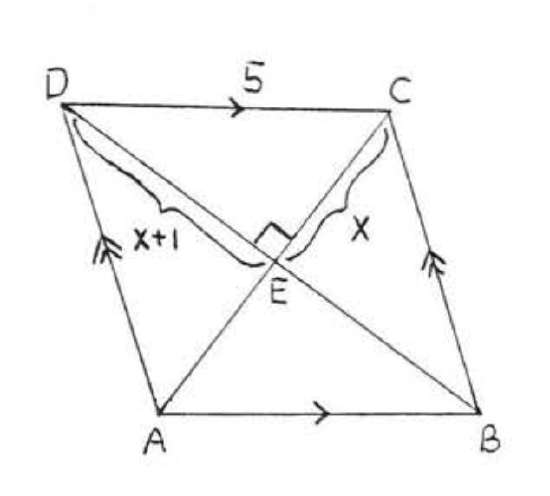
6.
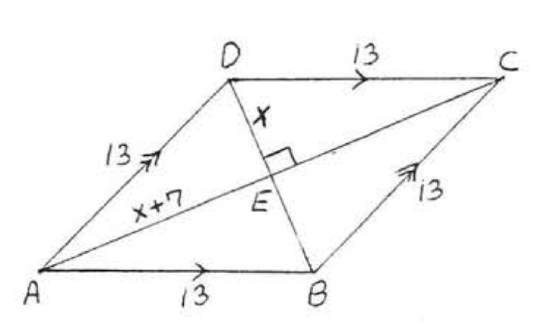
7.
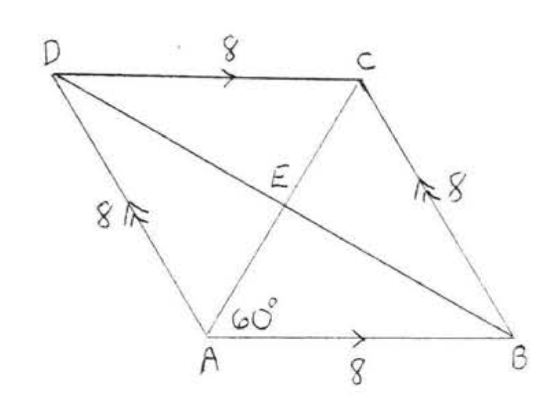
8.
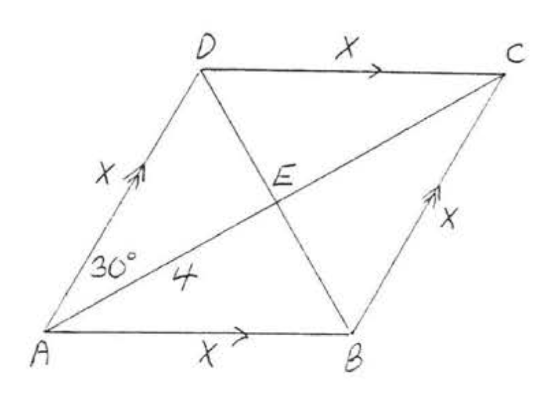
9 - 10. Find the area to the nearest tenth:
9.

10.
